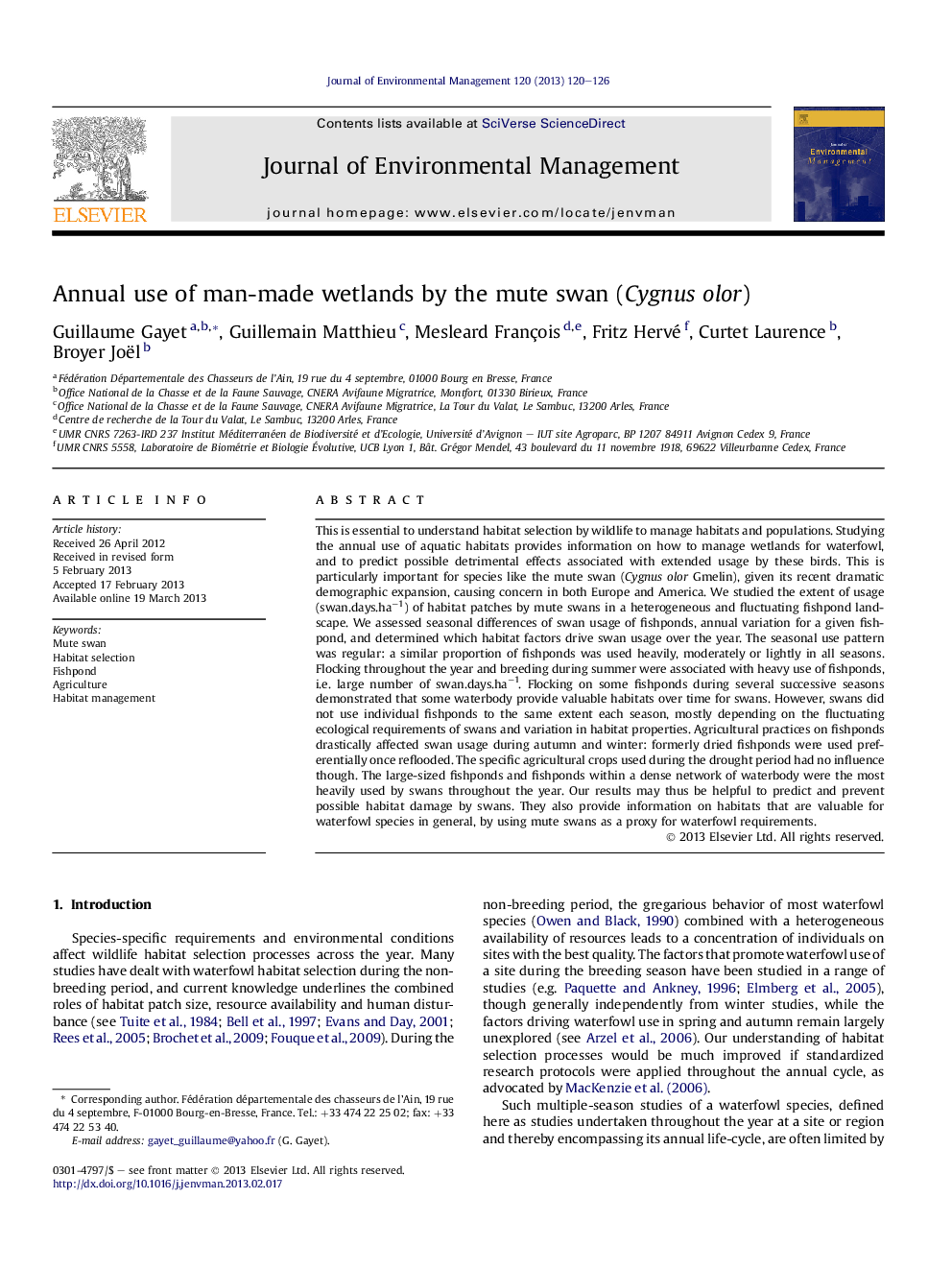| Article ID | Journal | Published Year | Pages | File Type |
|---|---|---|---|---|
| 1056059 | Journal of Environmental Management | 2013 | 7 Pages |
This is essential to understand habitat selection by wildlife to manage habitats and populations. Studying the annual use of aquatic habitats provides information on how to manage wetlands for waterfowl, and to predict possible detrimental effects associated with extended usage by these birds. This is particularly important for species like the mute swan (Cygnus olor Gmelin), given its recent dramatic demographic expansion, causing concern in both Europe and America. We studied the extent of usage (swan.days.ha−1) of habitat patches by mute swans in a heterogeneous and fluctuating fishpond landscape. We assessed seasonal differences of swan usage of fishponds, annual variation for a given fishpond, and determined which habitat factors drive swan usage over the year. The seasonal use pattern was regular: a similar proportion of fishponds was used heavily, moderately or lightly in all seasons. Flocking throughout the year and breeding during summer were associated with heavy use of fishponds, i.e. large number of swan.days.ha−1. Flocking on some fishponds during several successive seasons demonstrated that some waterbody provide valuable habitats over time for swans. However, swans did not use individual fishponds to the same extent each season, mostly depending on the fluctuating ecological requirements of swans and variation in habitat properties. Agricultural practices on fishponds drastically affected swan usage during autumn and winter: formerly dried fishponds were used preferentially once reflooded. The specific agricultural crops used during the drought period had no influence though. The large-sized fishponds and fishponds within a dense network of waterbody were the most heavily used by swans throughout the year. Our results may thus be helpful to predict and prevent possible habitat damage by swans. They also provide information on habitats that are valuable for waterfowl species in general, by using mute swans as a proxy for waterfowl requirements.
► We studied annual use of fishponds by mute swan. ► A similar proportion of fishponds was used heavily, moderately or lightly in all seasons. ► Swans did not use individual fishponds to the same extent each season. ► Agricultural practices on fishponds severely affected swan stay. ► Increasing area and low isolation of fishponds increased their use by swans.
